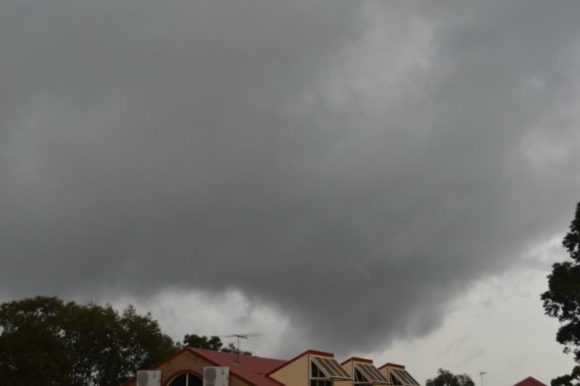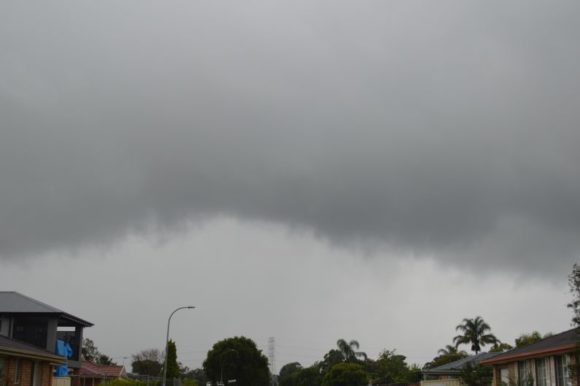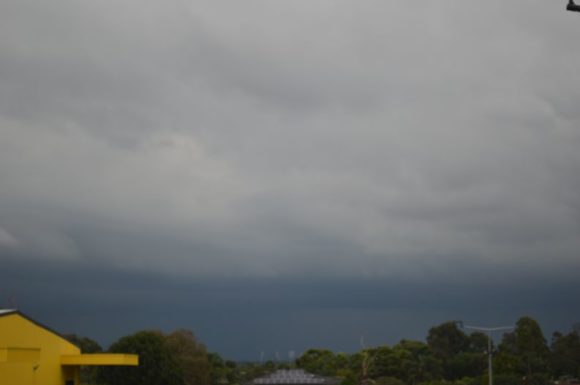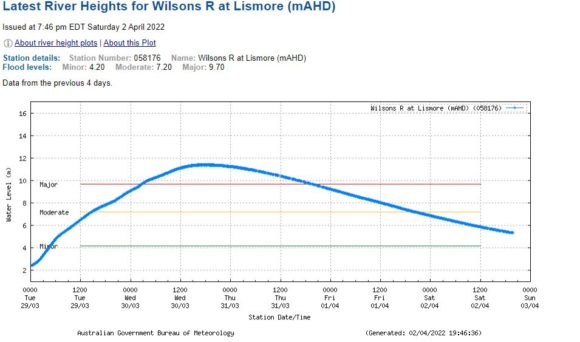March 2022 will be remembered as a month of intense rainfall and numerous flood events across much of coastal New South Wales.
To assist the post, a number of weather stations have been reviewed and comparisons made for the following:
- Four (4) Sydney metropolitan weather stations.
- Six (6) coastal weather stations mainly on the New South Wales North Coast.
- Five (5) weather stations across the wheat sheep belt of inland New South Wales being the main farming areas of the state. In such areas average annual rainfall typically ranges from 500 mm to 700 mm.
It is only when such a comparison is made does the extent of the big wet along the coast shows itself. For the first three months of 2022 between January 1 and March 31, the following has occurred at the following locations.
| Station Name | Rainfall Jan | Rainfall Feb | Rainfall March | Three month total | Annual total
(Average) |
| Parramatta | 147.8 mm | 253 mm. | 554.2 mm on 22 days. | 955 mm. | Mean - 1,023.6 mm.
Median - Not known. |
| Penrith | 146.6 mm. | 118.6 mm. | 592.8 mm on 23 days. | 957.4 mm. | Mean 742.2 - mm.
Median - 669.8 mm |
| Richmond | 124.6 mm | 124.8 mm. | 591.2 mm on 22 days. | 840.8 mm. | Mean 746.7 - mm.
Median - 693.9 mm. |
| Sydney | 166.2 mm. | 366 mm. | 554 mm on 26 days. | 1,066.2 mm. | Mean -1,214.2 mm.
Median -1,158.7 mm. |
| North Coast NSW. | |||||
| Ballina | 288 mm. | 577.8 mm | 811.8 mm on 23 days. | 1,677.6 mm. | Mean -1,758.4 mm.
Median -1,665.2 mm. |
| Coffs Harbour | 196.4 mm. | 486 mm. | 760 mm on 28 days. | 1,442.4 mm. | Not available. |
| Dorrigo | 360.4 mm. | 522.1 mm | 712.6 mm on 26 days. | 1,594.5 mm. | Not available. |
| Grafton (Research Station) | 19.8 mm. | 502.4 mm. | 348.6 mm on 27 days. | 870.8 mm. | Mean - 1,001.7 mm.
Median -933.8 mm. |
| Port Macquarie | 210.6 mm. | 380.2 mm. | 609.8 mm on 23 days. | 1,200.6 mm. | Not available. |
| Yamba | 168.8 mm. | 549 mm. | 717.8 mm on 27 days. | 1,435.6 mm. | Mean -1,462.6 mm.
Median - 1,398.4 mm. |
The coastal rainfall for March and for the first three months of 2022 is staggering as follows:
- At some official weather stations, the rainfall for the first three months of the year has already exceeded the average annual yearly rainfall. In some cases, this is by a significant amount. This is clearly shown at Penrith and if other weather stations are compared, a similar conclusion would also be reached.
- At other weather stations, the average yearly rainfall is being approached.
- During March 2022, considerable rainfall was recorded right along the New South Wales East coast to such an extent that figures exceeding 500 mm were relatively common.
When the March rainfall of the above centres is compared to the yearly rainfall at the following inland centres situated within the wheat / sheep belt of New South Wales as shown:
| Station Name | Rainfall Mean | Rainfall Median |
| Albury Airport | 617.7 mm. | 561.8 mm. |
| Dubbo | 589.5 mm. | 541.6 mm. |
| Forbes | 511.5 mm | 433.4 mm. |
| Tamworth | 643.9 mm. | 609.8 mm. |
| Wagga Wagga | 578.4 mm. | 563.8 mm. |
It becomes apparent that:
- The March rainfall at some coastal locations has exceeded the entire yearly rainfall typically expected in an average year across much of the inland wheat sheep belt of New South Wales.
- The amount of rain that has fallen in the first three months of 2022 at some coastal locations is double the yearly rainfall typically expected in an average year across much of the main inland wheat / sheep belt of the state.
At some locations, new monthly rainfall records have been set such as what has occurred at Penrith and Richmond.
As a result of such heavy rain along the coast, river catchments are saturated and as a result, there have been numerous flood events. Over the past week, while the Hawkesbury River Valley did not flood a second time, renewed flooding did occur at Lismore and surrounding areas and across other North Coast regions.


The latest rain event saw significant flooding again at Lismore causing more misery and further loses which is compounded by the impact of the first flood event. To show this, the following high rainfall figures occurred:
Tuesday morning March 29 2022 to 9 am
Murwillimbah - 247 mm.
Clothiers Creek - 249 mm.
Numinbah - 199 mm.
Wednesday morning March 30 2022 to 9 am
Coffs Harbour - 154 to 248 mm.
Meldrum - 253 mm.
Ballina - 282 mm.
Dorrigo - 316.
Alstonville (Near Lismore) - 431 mm.
Hornsby (Northern Sydney - 115 mm).
Thursday morning March 31 2022 to 9 am
Coffs Harbour - 61 mm to 138 mm (Higher falls 3 to 4 km inland from the coast close to the northern hills).
Lake Cathie - 154 mm.

The reason for the flooding around Lismore becomes apparent with the Wilson River peaking at a major flood level of 11.4 metres AHD during Wednesday. River levels continue to fall and are now below moderate flood levels.

The photos attached to this post highlight heavy rain showers experienced around Sydney at times throughout the week. During Thursday rainfall eased to lighter showers commencing a clearing trend throughout Friday and into Saturday.
However, longer range forecasts appear to point to further rainfall from Wednesday which will only again hamper the recovery.
